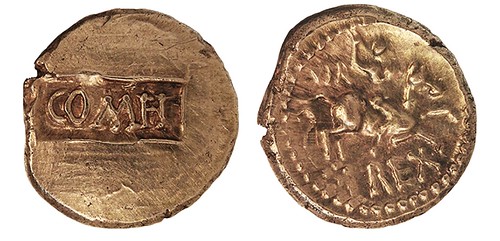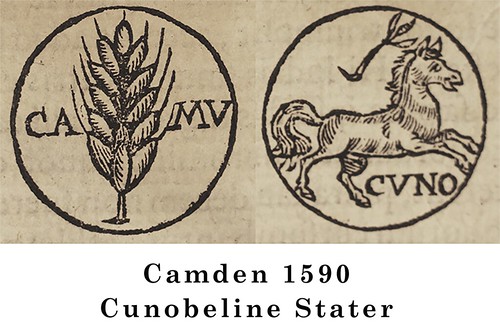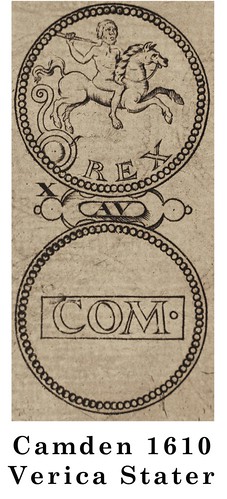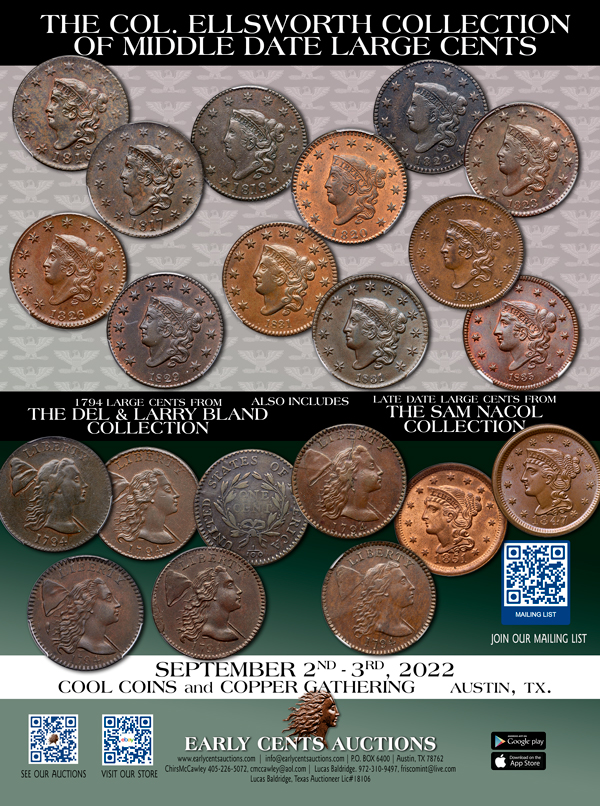
PREV ARTICLE
NEXT ARTICLE
FULL ISSUE
PREV FULL ISSUE
V25 2022 INDEX E-SYLUM ARCHIVE ANTIQUARIAN BOOKS IN NUMISMATIC STUDIESBob Van Arsdell published a new article with a warning about using antiquarian books for numismatic studies. -Editor Bob writes:
"It took 250 years to identify the coins of an Ancient British king because an erroneous image from 1610 was copied over and over. The king's coinage could have been identified immediately, but repeated scholarly errors made it Great advice. Here's an excerpt - see the complete article online. -Editor The Invisible Coinage of Verica In the late 1500s, antiquarian writers began to study Ancient British coins. Some coin inscriptions seemed to match the accounts of ancient Roman authors. Camden and Speed used these coins to illuminate a murky period in British history. Cunobeline's coins were identified first. His large coinage with a bold "CVNO" was hard to miss – Camden illustrated four Cunobeline types in the 1590 edition of his Britannia. These are the earliest images of Ancient British coins to appear in print. Surprisingly, the large coinage of Verica was not identified for another 250 years. Although a Verica stater was found before 1610, it was misattributed as a coin of Commius. Scholarly errors over the next two centuries made the coinage of Verica "invisible" to the general public. The stater was mis-attibuted because it had been struck from damaged dies – the inscriptions could easily be misread. And, of course, Commius was a prominent figure in Caesar's Gallic War. The attribution to such a famous man proved to be an exciting discovery. It was easy to miss the correct attribution to Verica. He's only mentioned by Dio in one sentence. The Early Reports Camden's 1590 third edition of the Britannia showed five ancient British coins: four of Cunobeline and one uncertain type. He'd used them merely as illustrations, with little description. But the illustrations proved to be popular and attuned readers to the idea that the Ancient Britons used proper coins. Camden's success started off a three hundred year search for coins struck by rulers mentioned in Caesar, Dio Cassius and other ancient authors. Camden 1607-1610
Unfortunately, Camden misread the inscription on the obverse, and attributed the coin to Commius, not Verica. Commius was a major figure in Caesar's Gallic War. Verica was mentioned only in one obscure passage in Dio. Of the two, Commius was probably the better choice at the time. Today, examples of the type are known from a set of dies that became very worn. As luck would have it, Camden's coin would be struck from the worst state of the pair. The "VER" above the horse is very weak, and the FI in "COM-FI" is almost obliterated. Camden would ignore the VER and FI completely and take the inscriptions to read COM REX – Commius, King. Numismatic authors would repeat this error for the next 200 years. Ackerman would eventually illustrate the coin correctly (in 1846) and Evans would begin to publish the facts in 1864.
To read the complete article, see:
Wayne Homren, Editor The Numismatic Bibliomania Society is a non-profit organization promoting numismatic literature. See our web site at coinbooks.org. To submit items for publication in The E-Sylum, write to the Editor at this address: whomren@gmail.com To subscribe go to: https://my.binhost.com/lists/listinfo/esylum All Rights Reserved. NBS Home Page Contact the NBS webmaster 
|



